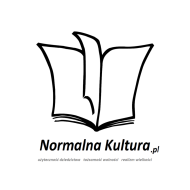name: Alexander; last name: Sochaczewski
A. Sochaczewski was born under the name Sonder Leib in Iłów near Sochaczew. He was born to a poor Jewish family. In the late 1850s, he began his education at the Rabinnical University in Warsaw. The facility was established in 1826. Progressive Jews, supporters of assimilation with Polish society. During the January Uprising, the school’s students actively supported Polish patriotic activities, among them – Sonder Leib.
In 1860, he abandoned the career path chosen for him by his father, not completing his education in this direction. He transferred to the Warsaw School of Fine Arts and changed his name to Aleksander Sochaczewski. Since childhood, he was fascinated by painting and drawing, unfortunately devoting one’s life to this field of art was unthinkable in the traditional, poor Jewish community from which he came. His works, already signed with a Polish name, were exhibited at the student vernissage in 1861.
On the night of August 31 to September 1, 1862, A. Sochaczewski was arrested. The police caught up on his activities by questioning students from the province, to whom he gave leaflets with patriotic content. During the search, they discovered a gun, molds for casting bullets, packages with illegal newspapers ready for delivery, as well as, dies for forging stamps. For the possession of each of these items separately, Russian law warranted the death penalty to be administered. The detainee tried his escape, also took a shot in the direction of the policeman standing in his way.
If I wanted to kill you… and I don’t know this man.
The behavior of Sochaczewski during the investigation allows us to say that he was an unusually talented conspirator. During the interrogation, he addressed the injured policeman directly, proving that he shot only to escape, and did not intend to kill him or seriously injure him – which he could have done easily, because the men during the search of the apartment were standing very close to each other. He did not give up any of his colleagues, consistently claiming that he knew them only from the University, while at the time of showing m.in. with Jarosław Dąbrowski (1836-1871), the leader of the Reds, he behaved as if he had seen him for the first time.
Sochachewski was sentenced to death, which was later changed by Grand Duke Constantine into 22 years of hard labor in the mines of eastern Siberia. The convict learned about the change of sentence literally at the last moment, standing ready under the gallows for public execution. As he recalled from these moments, he remembers the frightened face of his father, who was too poor to help his son in such a situation. After hearing the decision to withdraw the sentence, he lost consciousness.
Body of work
While in exile, he drafted sketches depicting Siberian convicts. When he returned to the country in 1884, none of his close relatives were still alive, and the authorities banned him from living in Warsaw. Therefore, he went to Lviv. He began creating paintings based on his earlier drawings. These works aroused the interest of many European salons, and so because of that Sochaczewski settled permanently outside Polish borders. The most famous work is „Farewell to Europe”, depicting Exiles at a stopover by the obelisk standing at a division line between Europe and Asia.
In 1824, he was posthumously awarded the Knight’s Cross of the Order of Polonia Restituta. He died in Biedersmansdorf, Austria.
At least 118 sketches and paintings by this author have survived to this day, now exhibited in the Museum of the X Pavilion of the Warsaw Citadel.
For those interested:
H. Boczek, Aleksander Sochaczewski (1923-1943): życie i twórczość, „Niepodległość i Pamięć” 1995, 2/1 (2). S.81-96
